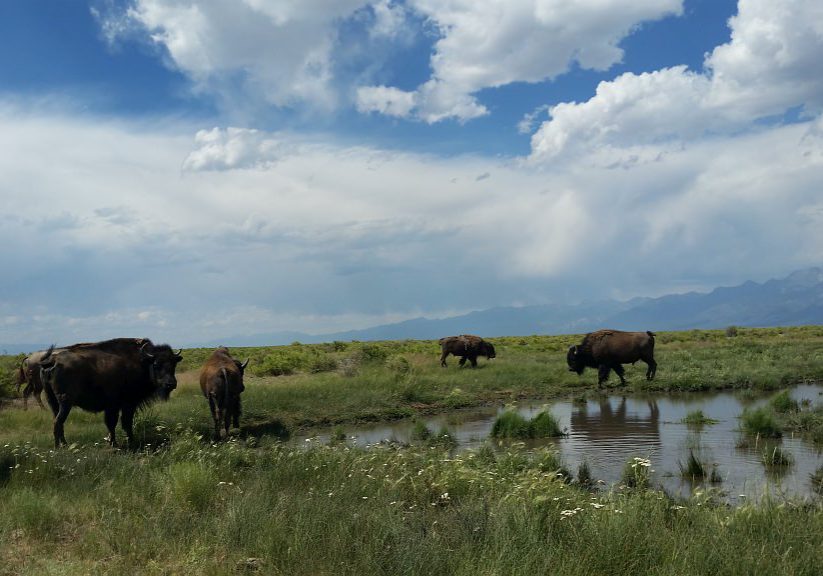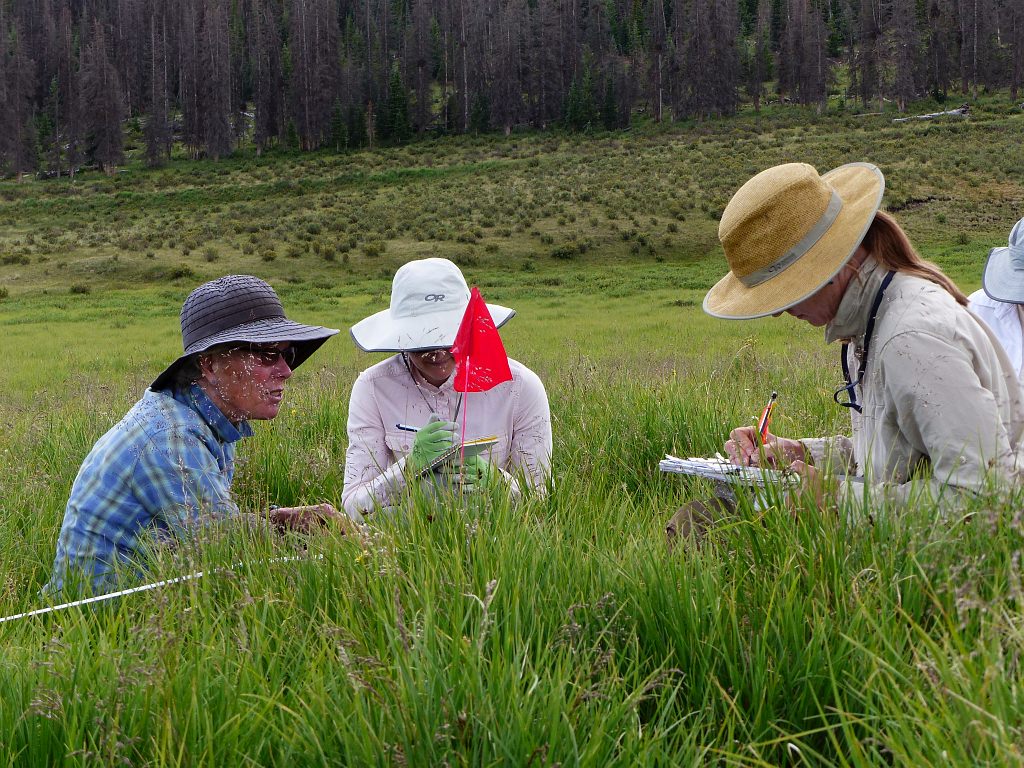Wetland and Riparian Monitoring
CNHP supports both the National Park Service and Bureau of Land Management in long-term wetland and riparian monitoring programs.
National Park Service
CNHP is partnering with the Rocky Mountain Inventory and Monitoring Program to conduct five years of wetland monitoring in Great Sand Dunes National Park to support the development of an ungulate management plan for the Park. Great Sand Dunes is home to a sizable population of native elk as well as a managed, free-ranging bison herd. Both species preferentially graze in the Park’s extensive wetland complexes at the base of the dunes. In order to understand the impact of ungulate grazing on these wetlands, CNHP and NPS are collecting data on vegetation composition, species diversity, soil condition, groundwater levels, and ungulate use.



Bureau of Land Management
CNHP is collaborating with BLM and U.S. Forest Service scientists to develop a wetland monitoring protocol that can be used through the BLM’s Assessment, Inventory and Monitoring (AIM) Program and for other multi-agency needs. The protocol includes methods for vegetation sampling, soil profile characterization, water quality sampling, and evaluation of land use stressors. CNHP tested preliminary methods during the summer of 2017 and a full draft of the protocol is expected to be released in spring 2018.
CNHP is also assisting the BLM in Utah with stream monitoring through the AIM program. CNHP technicians will conduct up to five years of stream monitoring in Utah in partnership with BLM Fisheries Biologists. For more information about the BLM’s AIM program, visit the Landscape Toolbox website.






